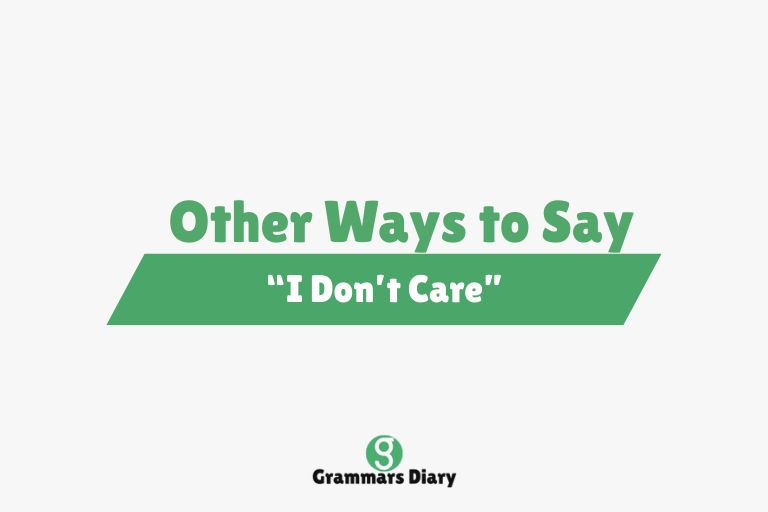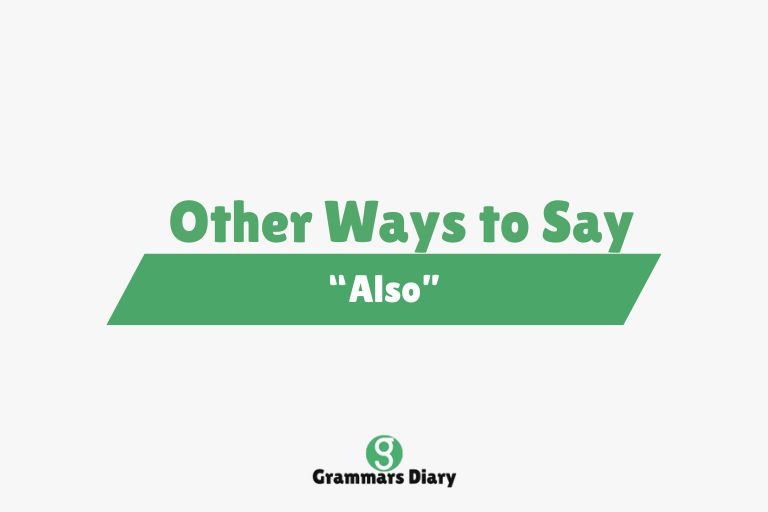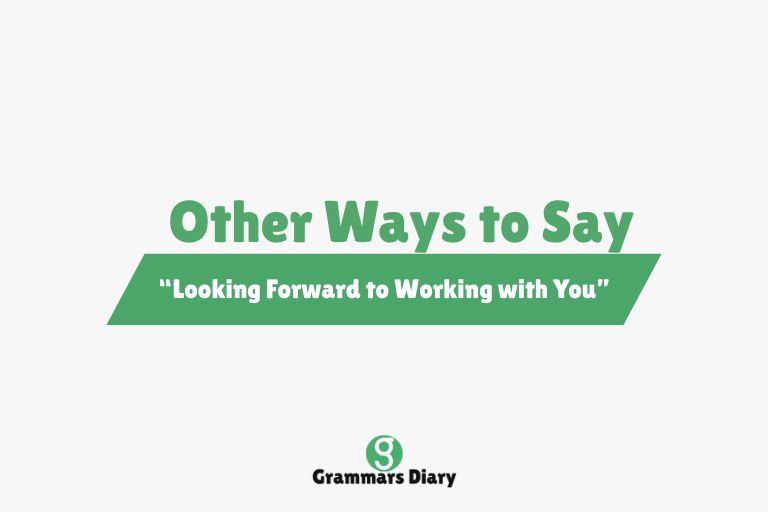27 Other Ways to Say “I Understand”

The phrase “I understand” is one of the most widely used expressions in the English language, typically indicating that the speaker has mentally grasped the information, emotion, or situation being discussed, and while it is straightforward and practical, it can sometimes feel overused or lacking in nuance, especially when repeated in conversation.
For example, when someone says, “I understand how difficult that must be,” they’re showing empathy and mental acknowledgment, but there are many other ways to express this sentiment—some more formal, some more emotional, and some more specific to the context—each offering its own subtle flavor and depth.
This article explores 27 different ways to say “I understand,” helping you diversify your vocabulary and communicate with more precision, empathy, and clarity in a variety of settings, whether casual, professional, or academic.
Other Ways to Say “I Understand”
1. I see what you mean
Example: “I see what you mean about the timing being a problem.”
Meaning: This phrase suggests that you comprehend not just the surface message but the underlying concern or logic.
Usage: Works well in both casual conversations and professional settings to express alignment with someone’s reasoning.
2. I get it
Example: “I get it now—you were just trying to help.”
Meaning: A short and informal way to express full comprehension of the situation or idea.
Usage: Ideal for everyday use, especially when you want to sound relatable and down-to-earth.
3. I follow you
Example: “Okay, I follow you—so first we update the file, then send it out.”
Meaning: Indicates that you’re keeping up with the logic or flow of someone’s explanation.
Usage: Often used during ongoing conversations or detailed instructions.
4. I hear you
Example: “I hear you, and I agree it hasn’t been easy.”
Meaning: Goes beyond understanding to include emotional acknowledgment; shows that the speaker feels heard.
Usage: Especially effective in sensitive or emotionally charged discussions.
5. That makes sense
Example: “Ah, that makes sense now—you had no choice.”
Meaning: Suggests that something once confusing is now clear and logically valid.
Usage: Great for moments when you’ve just reached understanding or insight.
6. Got it
Example: “Got it—I’ll make the changes right away.”
Meaning: A very concise, informal way of signaling comprehension and readiness to act.
Usage: Perfect for quick exchanges in casual or workplace conversations.
7. I grasp the idea
Example: “I grasp the idea behind your proposal—it’s about long-term value.”
Meaning: Highlights intellectual understanding, especially of complex or abstract concepts.
Usage: Useful in formal or academic settings to convey thoughtful comprehension.
8. I comprehend
Example: “I comprehend the risks involved, and I’m still on board.”
Meaning: A formal and slightly more academic synonym for “understand.”
Usage: Common in technical, legal, or high-level professional contexts.
9. I acknowledge that
Example: “I acknowledge that this has been a frustrating experience for everyone.”
Meaning: Goes beyond basic understanding to recognize the truth or validity of someone’s feelings or position.
Usage: Effective in diplomatic or conflict-resolution scenarios.
10. I’m with you
Example: “I’m with you—we need a different strategy.”
Meaning: Indicates not just understanding but agreement or support.
Usage: Useful when aligning yourself with someone’s perspective in discussions or decision-making.
11. I’ve got the picture
Example: “You don’t have to explain further—I’ve got the picture.”
Meaning: Suggests a full understanding of the situation, often with visual or situational clarity.
Usage: Common in informal contexts, particularly when summarizing a situation.
12. I can relate
Example: “I can relate—I’ve gone through something similar.”
Meaning: Implies emotional understanding drawn from personal experience.
Usage: Works well in empathetic conversations, especially when offering support.
13. I totally get where you’re coming from
Example: “I totally get where you’re coming from—it’s hard to feel appreciated sometimes.”
Meaning: Conveys strong emotional understanding and agreement with someone’s perspective or feeling.
Usage: Informal and emotionally expressive, good for close or heartfelt interactions.
14. I get the point
Example: “You’ve made your case clear—I get the point.”
Meaning: Suggests that the key message has been successfully received, sometimes implying the speaker wants to move on.
Usage: Appropriate in conversations where repetition is becoming excessive or clarity has been achieved.
15. I’m aware
Example: “I’m aware that this decision affects more than just our team.”
Meaning: Shows informed understanding, often about broader consequences or background.
Usage: Common in both formal and professional conversations.
16. I’m conscious of that
Example: “I’m conscious of that deadline—we’re working to meet it.”
Meaning: Indicates a continuous or active understanding, particularly of responsibilities or risks.
Usage: Useful in business or serious discussions to convey accountability.
17. I’m on the same page
Example: “I’m on the same page—we need to cut costs this quarter.”
Meaning: Implies agreement and shared understanding of a concept or strategy.
Usage: Great for teamwork and collaboration situations.
18. I’ve taken note
Example: “I’ve taken note of your suggestions for improvement.”
Meaning: Reflects that you’ve registered the information and intend to act on it.
Usage: Often used in formal communication or written correspondence.
19. I catch your drift
Example: “No need to say more—I catch your drift.”
Meaning: A casual way to express that you understand the implication or underlying meaning.
Usage: Suitable in informal settings, especially when reading between the lines.
20. I picked up on that
Example: “I picked up on that tension during the meeting.”
Meaning: Shows awareness of subtle or indirect cues or emotions.
Usage: Often used when discussing unspoken or implied information.
21. I get the idea
Example: “You don’t need to explain further—I get the idea.”
Meaning: Indicates general understanding, even without every detail.
Usage: Common in both formal and casual conversation when you’ve heard enough to follow.
22. I see where you’re coming from
Example: “I see where you’re coming from—it’s been overwhelming.”
Meaning: Demonstrates empathy and understanding of someone’s perspective.
Usage: Effective in emotionally sensitive or relational dialogues.
23. I get the message
Example: “Okay, I get the message—I’ll be more careful next time.”
Meaning: Shows that you’ve understood both the literal and possibly emotional content.
Usage: Can be used informally or to respond to criticism or warning.
24. I take your point
Example: “I take your point—it wasn’t the best approach.”
Meaning: Indicates thoughtful agreement or consideration, even after initial disagreement.
Usage: Often used in debates or structured discussions.
25. I have a handle on it
Example: “Don’t worry—I have a handle on it now.”
Meaning: Means that you not only understand but also have control or mastery.
Usage: Good for workplace tasks, problem-solving, or skill-based discussions.
26. I get the picture loud and clear
Example: “After today’s meeting, I get the picture loud and clear.”
Meaning: Emphasizes full and unmistakable understanding.
Usage: Effective when emphasizing that the message has been completely received.
27. Point taken
Example: “Point taken—I’ll be more tactful in the future.”
Meaning: Concise acknowledgment that someone’s message or feedback is accepted.
Usage: Short, direct, and commonly used in professional or critical feedback scenarios.
When to Use Different “I Understand” Alternatives
In Professional Settings
In business and workplace contexts, using phrases like “I acknowledge that,” “I comprehend,” or “I’ve taken note” can convey not only understanding but also responsibility and formality, which helps maintain clarity and professionalism in your communication while avoiding overly casual language that might seem dismissive or vague.
In Casual Conversations
When talking with friends, family, or peers, expressions such as “I get it,” “I’m with you,” or “I catch your drift” can make your tone feel relaxed and emotionally in sync, allowing the conversation to flow more naturally while still signaling attentiveness and empathy without sounding too clinical or distant.
In Emotional or Supportive Contexts
During sensitive or heartfelt moments, especially when someone is opening up or venting, using alternatives like “I hear you,” “I can relate,” or “I see where you’re coming from” can provide comfort and connection, helping the other person feel genuinely seen, validated, and emotionally supported rather than simply acknowledged in a surface-level way.
Conclusion
While “I understand” is a reliable and frequently used phrase, having a diverse vocabulary of alternatives empowers you to express empathy, comprehension, and alignment with greater precision and emotional resonance, especially when you want your communication to be more effective and situationally appropriate.
Whether you’re in a boardroom meeting, chatting with a friend, or offering support during a tough conversation, choosing the right phrase for “I understand” allows you to better match the tone, audience, and intent of your message.
If you’re eager to explore even more nuanced alternatives or synonyms for everyday expressions, websites like Thesaurus.com can offer additional insights and ideas to enrich your spoken and written language.
FAQs
What does “I understand” mean?
“I understand” means that you have mentally grasped the meaning, intention, or feeling behind what someone is saying, often implying both cognitive and emotional awareness of the situation.
Is “I understand” formal or informal?
“I understand” is a flexible phrase that works in both formal and informal settings, but depending on tone and context, alternative expressions can help better tailor the message.
Can I use “I hear you” in professional settings?
Yes, but it depends on the tone and relationship—“I hear you” can be used in professional environments, especially when offering support or acknowledging concerns, though more neutral phrases like “I acknowledge that” or “I take your point” might be better suited for high-level or formal dialogue.






